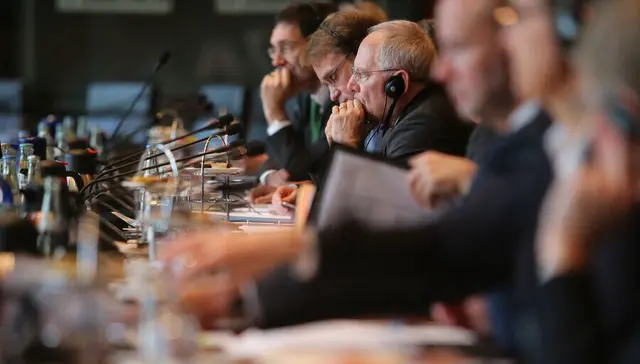Much maligned and under constant pressure to change its drawn-out format, the Davis Cup reached a ‘seminal moment’ on Monday as ITF president David Haggerty unveiled plans to replace the weekend World Group ties with a World Cup of tennis.
The World Cup of Tennis Finals will bring the 16 leading nations plus two wildcards together in one city for a week-long climax to the season, with the inaugural edition expected to start in 2019.
While traditionalists may mourn the loss of the home-and-away format that can generate partisan atmospheres, others will say the move to modernise the 118-year-old team event that moves at a glacial pace throughout the year has been long overdue.
Barcelona and Spain soccer player Gerard Pique, founder of investment group Kosmos who signed a 25-year, $3 billion partnership with the International Tennis Federation to run the new event, believes the radical overhaul is needed.
Keen tennis player Pique met leading players in Madrid last year to discuss his proposals for a tennis competition to run along similar lines as the soccer World Cup.
Haggerty, voted in as ITF president in 2015, has been receptive to change and has made transforming the flagging fortunes of the Davis Cup and maximising its financial potential his priority. Now it looks as though he has got his wish.
”This is a seminal moment,“ Haggerty told Reuters by telephone. ”We think it’s great. Davis Cup is such a fantastic property and we think with 18 teams in one place for the final will really resonate.
“We know the top players will play and we think it will make Davis Cup even better than it is today.”
The Davis Cup World Group, currently played over three weekends from February to September with the final in November, has struggled to attract the top players on a regular basis.
Nations routinely have to make do without their best players who are reluctant to travel great distances or switch surfaces for just three days.
Under the new plans, the tournament will be played over seven days in November. It will feature six groups of three teams battling it out in a round-robin format. The six group winners plus the two best runners-up will advance to a quarter-final knockout stage.
Each tie will consist of two singles rubbers and one doubles over the best-of-three sets.
The eight teams who fail to make the knockout stages will then face the eight zonal winners in a playoff during that same week. The eight playoff winners will earn a place in the following year’s Finals.
Haggerty is confident the new event will prove popular with the leading players, whose participation would be key, and the TV companies who might be scrambling for broadcast rights.
”It’s been a two-way process,“ he said. ”I met with the Player Council in 2016 and they raised this idea of playing less so they can play more.
”I think it has good support. There will always be some players who are not as supportive as others but we are excited.
”We think that this will have a World Cup football atmosphere. It will bring many fans, great tennis on the court and plenty of entertainment off it.
“A real festival atmosphere for the week which will incentivise consumers and fans and supporters of nations to want to travel to watch their teams.”
Haggerty believes the one-week format for the Finals would help focus minds.
“This is a way to ensure we have great participation,” he said. “Players will now know when it will be and where it will be.”
He was at pains to point out that the changes did not mean the end of the Davis Cup, merely an evolution.
”It will continue to be the Davis Cup,“ he said. ”A couple of years ago we included the tag line “World Cup of Tennis” and this certainly fits into that concept.
”I think when I came in I thought the competition was fantastic but that it could be improved.
“The rigours on the players today are different than they were in 1900. We wanted to find ways to improve a great competition. It will be very compelling.”
Haggerty, formerly the chairman of the U.S. Open and a United States Tennis Association board member for 10 years, said the first host city could be announced within six weeks.
“The plan is to start in 2019 and the good news is we have quite a bit of time to put the plans together with Kosmos,” he said.
(REUTERS)
 简体中文
简体中文

